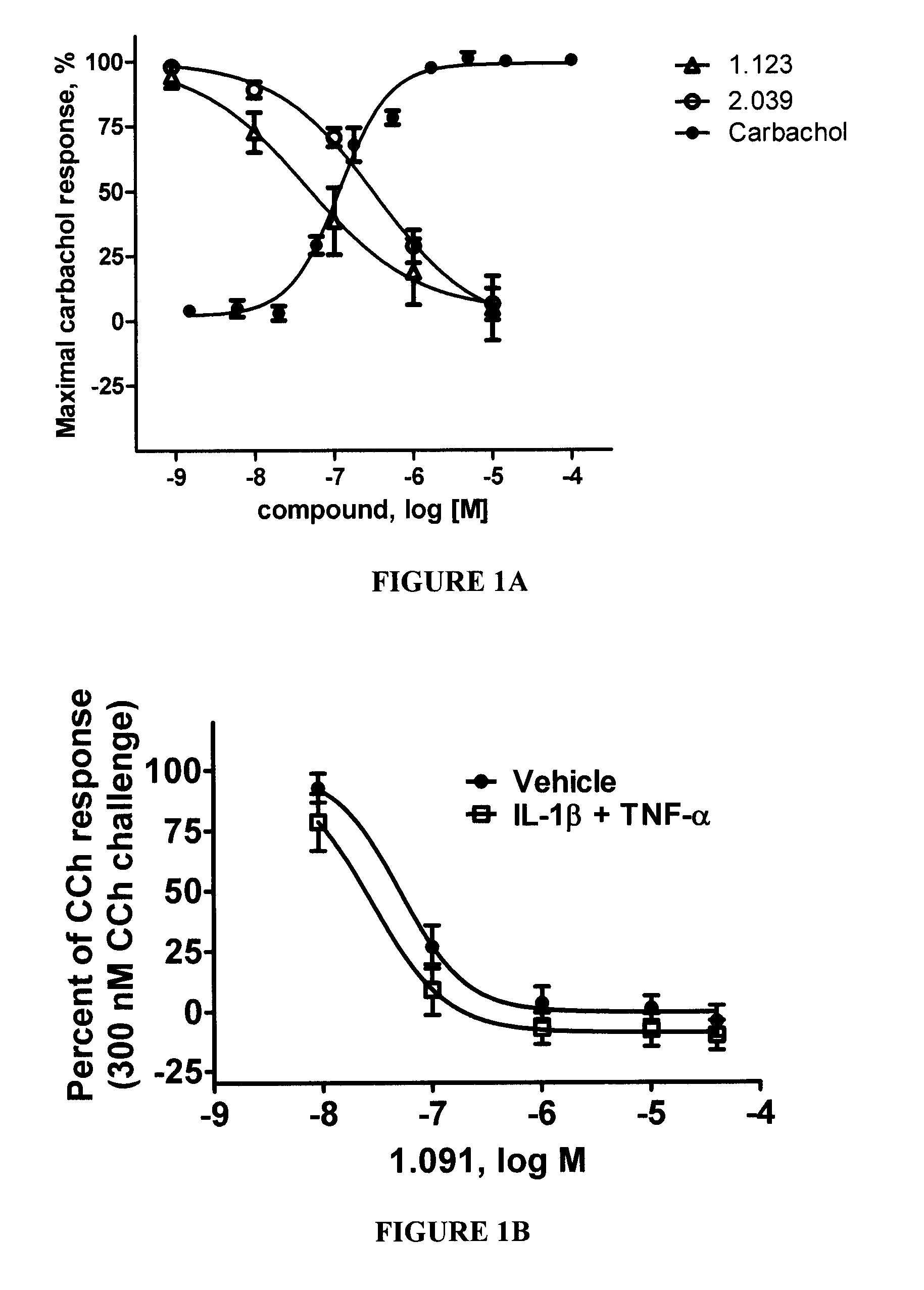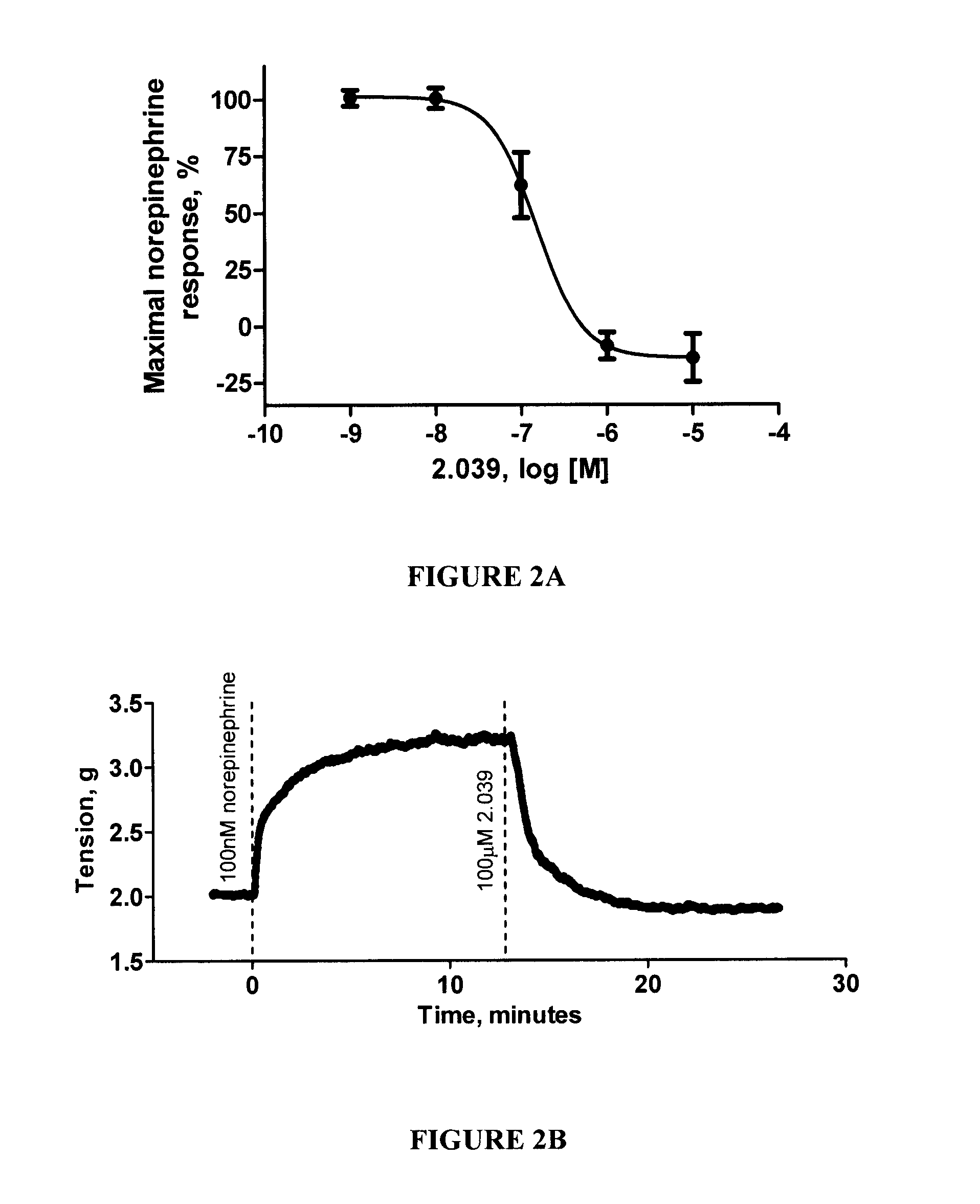Method for treating pulmonary diseases using rho kinase inhibitor compounds
a technology of kinase inhibitors and compounds, applied in the direction of heterocyclic compound active ingredients, drug compositions, biocides, etc., can solve the problems of reducing the elastic recoil and hyperinflation of the lung, limiting the airflow, and reducing the integrity of the lung connective tissu
- Summary
- Abstract
- Description
- Claims
- Application Information
AI Technical Summary
Benefits of technology
Problems solved by technology
Method used
Image
Examples
embodiment 1
[1a] In embodiment 1, R.sub.2-1 is substituted by one or more alkyl or halo substituents.
[1b] In embodiment 1, R.sub.2-1 is substituted by one or more amino, alkylamino, hydroxyl, or alkoxy substituents.
[1c] In embodiment 1, R.sub.2-1 is unsubstituted.
[2] In another embodiment, the invention is represented by Formula I in which R.sub.2 is 5-isoquinolinyl or 6-isoquinolinyl (R.sub.2-2), optionally substituted.
embodiment 2
[2a] In embodiment 2, R.sub.2-2 is substituted by one or more alkyl or halo substituents.
[2b] In embodiment 2, R.sub.2-2 is substituted by one or more amino, alkylamino, hydroxyl, or alkoxy substituents.
[2c] In embodiment 2, R.sub.2-2 is unsubstituted.
[3] In another embodiment, the invention is represented by Formula I in which R.sub.2 is 4-pyridyl or 3-pyridyl (R.sub.2-3), optionally substituted.
embodiment 3
[3a] In embodiment 3, R.sub.2-3 is substituted by one or more alkyl or halo substituents.
[3b] In embodiment 3, R.sub.2-3 is substituted by one or more amino, alkylamino, hydroxyl, or alkoxy substituents.
[3c] In embodiment 3, R.sub.2-3 is unsubstituted.
[4] In another embodiment, the invention is represented by Formula I in which R.sub.2 is 7-azaindol-4-yl or 7-azaindol-5-yl (R.sub.2-4), optionally substituted.
PUM
| Property | Measurement | Unit |
|---|---|---|
| concentration | aaaaa | aaaaa |
| size | aaaaa | aaaaa |
| size | aaaaa | aaaaa |
Abstract
Description
Claims
Application Information
 Login to View More
Login to View More - R&D
- Intellectual Property
- Life Sciences
- Materials
- Tech Scout
- Unparalleled Data Quality
- Higher Quality Content
- 60% Fewer Hallucinations
Browse by: Latest US Patents, China's latest patents, Technical Efficacy Thesaurus, Application Domain, Technology Topic, Popular Technical Reports.
© 2025 PatSnap. All rights reserved.Legal|Privacy policy|Modern Slavery Act Transparency Statement|Sitemap|About US| Contact US: help@patsnap.com



